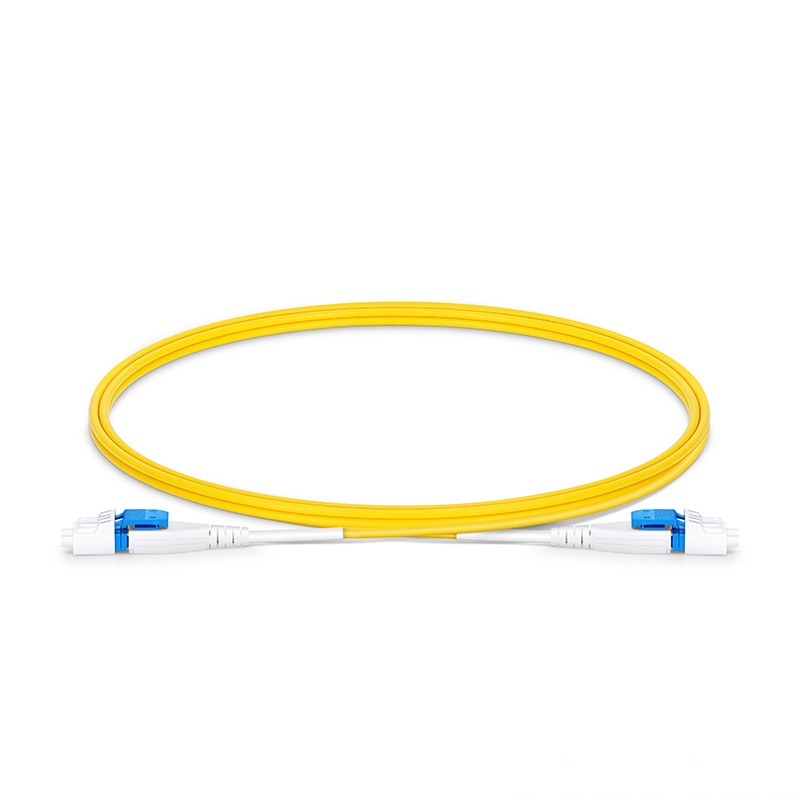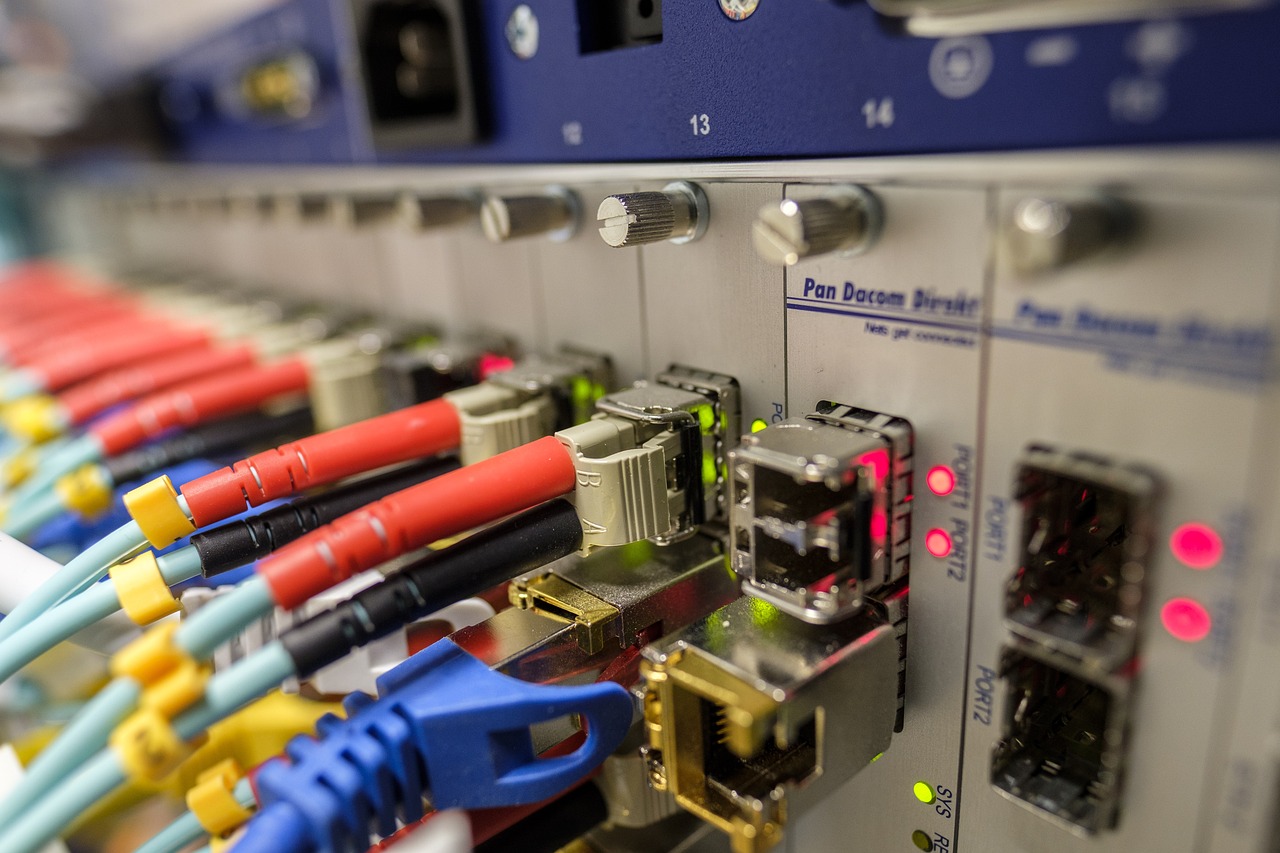Where to Find a 1m LC UPC Duplex Fiber Optic Patch Cable for OS2 Applications

Understanding Fiber Optic Patch Cables
Fiber optic patch cables play a crucial role in fiber optic networks, serving as the medium for transmitting data signals. These cables are designed to facilitate high-speed data transfer over long distances, making them an essential component in modern communication systems.
What Makes Fiber Optic Special
The unique characteristic of fiber optic cables lies in their ability to transmit data using light pulses. Unlike traditional copper cables, which rely on electrical signals, fiber optic cables utilize light to carry information. This feature enables them to deliver significantly higher bandwidth and faster data transmission rates.
The role of patch cables in fiber optic networks
Patch cables serve as the bridge that connects various network components, such as transceivers, switches, and routers. They facilitate the seamless transfer of optical signals between different devices within the network infrastructure. Without reliable patch cables, the integrity and efficiency of the entire fiber optic network would be compromised.
The Basics of Patch Cables
There are several types of fiber optic patch cables available, each designed for specific applications and environments. Common variations include single-mode and multi-mode cables, each catering to different signal transmission needs.
Types and uses of fiber optic patch cables
Single-mode patch cables are ideal for long-distance transmissions due to their ability to carry signals over extended distances with minimal loss. On the other hand, multi-mode cables are suitable for shorter distances within local area networks (LANs) and data centers.
In addition to their primary function of transmitting data signals, patch cables also play a vital role in maintaining network flexibility and facilitating efficient cable management.
The Importance of LC UPC in Fiber Optics
Fiber optic networks rely on connectors to ensure seamless transmission of data signals. LC UPC (Lucent Connector, Ultra Physical Contact) connectors are widely recognized for their pivotal role in maintaining signal integrity and minimizing data loss.
Exploring LC UPC Connectors
Features of LC UPC connectors
LC UPC connectors are designed with a smaller form factor compared to other connectors, making them ideal for high-density applications where space is limited.
These connectors utilize a ceramic ferrule, which provides precise alignment and ensures low signal loss during data transmission.
The push-pull mechanism of LC UPC connectors allows for easy and secure connections, reducing the risk of signal disruption.
Benefits of using LC UPC in patch cables
Utilizing LC UPC connectors in patch cables offers enhanced durability and reliability, ensuring consistent performance over time.
The compatibility of LC UPC connectors with various network components makes them versatile and suitable for diverse networking environments.
The low insertion loss characteristic of LC UPC connectors contributes to improved signal quality and overall network efficiency.
LC UPC and Signal Quality
How LC UPC enhances signal integrity
The precision alignment facilitated by LC UPC connectors minimizes signal distortion, resulting in higher data transmission accuracy.
By reducing reflection and insertion loss, LC UPC connectors contribute to maintaining optimal signal strength throughout the network.
Why OS2 Applications Require Specific Patch Cables
In the realm of fiber optics, OS2 applications hold a distinct position, demanding specialized patch cables tailored to their unique requirements.
Understanding OS2 Applications
OS2 applications are characterized by their emphasis on long-distance data transmission and high bandwidth capabilities. These applications are commonly found in settings where data needs to travel extended distances with minimal signal loss, such as telecommunications networks and internet infrastructure. The need for low attenuation is paramount in OS2 applications, as it directly impacts the ability to maintain signal strength over extended fiber optic links.
Characteristics of OS2 applications
OS2 applications are designed to support single-mode fiber optic cables, enabling them to transmit data over significantly longer distances compared to multi-mode cables. This makes them well-suited for long-haul networking scenarios where maintaining signal integrity across vast expanses is crucial.
The need for low attenuation in OS2
Low attenuation is essential in OS2 applications due to the extensive distances over which data must travel. By minimizing signal loss along the fiber optic path, low attenuation ensures that the transmitted data remains robust and intact upon reaching its destination.
The Role of Patch Cables in OS2 Applications
Selecting the right patch cable for OS2 applications is critical to ensuring seamless and reliable data transmission across these extensive networks. Patch cables designed specifically for OS2 applications are engineered to minimize signal degradation and maintain high performance over extended distances.
Selecting the right patch cable for OS2 applications
When choosing patch cables for OS2 applications, it's imperative to prioritize low attenuation characteristics. Opting for fiber optic patch cables with low insertion loss and exceptional signal integrity ensures that data can traverse lengthy connections without compromising on quality or speed.
In addition, these specialized patch cables contribute to the overall efficiency and reliability of OS2 networks, playing a pivotal role in sustaining consistent data transmission across expansive fiber optic infrastructures.
Finding the Right Corning G.657.A Certified Cable
When it comes to ensuring optimal performance and reliability in fiber optic networks, the significance of Corning G.657.A certified cables cannot be overstated.
The Significance of Corning G.657.A Certification
What is Corning G.657.A?
Corning G.657.A refers to a specific standard for bend-insensitive single-mode optical fiber, developed by Corning Incorporated. This certification denotes that the fiber optic cable meets stringent requirements for minimal signal loss and enhanced durability, particularly in scenarios where bending sensitivity is a concern.
Why Corning G.657.A matters for your network
Incorporating Corning G.657.A certified cables into your network infrastructure ensures that you are utilizing high-quality, reliable components designed to withstand bending and manipulation without compromising signal integrity. This certification signifies a commitment to superior performance and longevity in demanding fiber optic applications.
Where to Find Corning G.657.A Certified Cables
Tips for purchasing the right cable
Seek reputable suppliers: Look for established vendors or manufacturers with a proven track record in providing genuine Corning G.657.A certified cables.
Verify certification: Ensure that the cables are explicitly labeled as meeting the Corning G.657.A standard, providing assurance of their bend-insensitive and high-performance capabilities.
Consider application-specific needs: Assess your network requirements and select cables that align with the specific demands of your fiber optic infrastructure, such as long-haul transmission or high-density connectivity.
See Also
Premium Multimode Duplex Fiber Optic Patch Cable with SC/UPC
Top-Notch Singlemode Fiber Optic Patch Cables with LC/UPC Connectors
Optimal 1m Mode Conditioning Fiber Optic Patch Cable: LC to ST
The Advantages of LC UPC to LC UPC Duplex OS2 Fiber Optic Patch Cables for Industrial Applications
Choosing the Perfect Customized Duplex OM1 Multimode Fiber Optic Patch Cable


